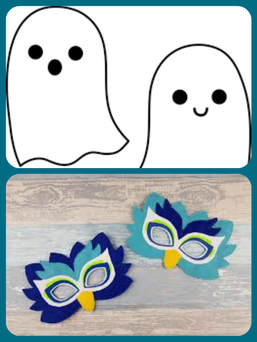 “With each year the Great Pumpkin rises out of the pumpkin patch he thinks is most sincere. He’s got to pick this one. He’s got to. I don’t see how a pumpkin patch can be more sincere than this one. You can look around and there’s not a sign of hypocrisy. Nothing but sincerity as far as the eye can see. Just wait and see, Charlie Brown. I’ll see the Great Pumpkin. I’ll see the Great Pumpkin. you wait, Charlie Brown. The Great Pumpkin will appear and I will be waiting for him.” Mischief night. Cabbage night. Goosey night. Whatever the name it means pranks (sometimes vandalism, unfortunately), throughout the eve of Halloween. When I was going through my trick or treat era, I have no recollection of any designated mischief night. The worst we did was soaping store windows on our way home from school Halloween day. We heard about the occasional toilet paper wrapping, but that was pretty much it. Art classes in school were all about the black and orange construction paper. We cut out silhouettes of cats, bats and witches’ hats. We would see who could draw the goofiest face on the paper pumpkins. The ghosts drawings were way more cute than scary. I grew up in a small town when Halloween was a more innocent event. Just about everyone participated in wearing a costume. Often neighborhoods would have a story theme. All the kids on the street would be a part of that theme. I remember one block did Sleeping Beauty. One kid was Sleeping Beauty lying in a wagon pretending to be asleep. Others were dressed up as fairies and various characters from the story. Costume creativity and originality was a big deal. That was because there would be a parade through the main street of the town, ending up at the school’s athletic field. There were cash prizes for different categories of costumes. One year I actually won $15 for originality. What I remember about that was dressing up as a cowboy. My uncle built a wooden horse which was fastened to me making it look like I was riding the horse. I’m sure there were more exotic costumes. Nevertheless, winning a prize was very exciting for a 10 year old. Trick or treating came after the parade. How fortunate to have grown up in the time prior to needles, razor blades and the like being inserted into the ‘treats.’ In fact, we were permitted to go out on our own throughout the residential areas. A favorite was a household, which every year invited the kids in for cider and doughnuts. So cool. What ever happened to those days? Sure, times change. People change and evolve. Sometimes for the better, sometimes not so much. Perhaps the Great Pumpkin will one day materialize. Then it will sprinkle the earth with magic pumpkin seeds and all the goodness in everyone will come forward to do good in the world. Not to mention how healthy we will become thanks to the anti-oxidants, iron, zinc, magnesium, protein, vitamin K and the many other nutrients found in pumpkin seeds. So let’s give it up for Linus and the Great Pumpkin. And a shout out to Charlie Brown for good measure. Comments are welcomed.
1 Comment
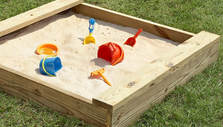 Recently I listened to an interview with George Vaillant, Professor of Psychiatry at Harvard Medical School and author of several books. He was asked what is the most important thing when it comes to aging. His answer was, “Play, play, play.” So Philosophers, psychiatrists, artists, writers, et al from Plato and Aristotle through the present have extolled the benefits of play. Play has been likened to oxygen. It is all around us but we don’t notice it until it is gone. Following are many benefits of play and why it is essential to people of all ages. Play supports physical, emotional, cognitive, and social development. Play can: Relieve stress. Play is fun and can trigger the release of endorphins, the body's natural feel-good chemicals. Endorphins promote an overall sense of well-being and can even temporarily relieve pain. Improve brain function. Playing chess, completing puzzles, or pursuing other fun activities that challenge the brain can help prevent memory problems and improve brain function. The social interaction of playing with family and friends can also help ward off stress and depression. Stimulate the mind and boost creativity. Young children often learn best when they are playing—and that principle applies to adults, as well. You’ll learn a new task better when it’s fun and you’re in a relaxed and playful mood. Play can also stimulate your imagination, helping you adapt and problem solve. Improve relationships and your connection to others. Sharing laughter and fun can foster empathy, compassion, trust, and intimacy with others. Play doesn’t have to be a specific activity; it can also be a state of mind. Developing a playful nature can help you loosen up in stressful situations, break the ice with strangers, make new friends, and form new business relationships. Keep you feeling young and energetic. Finally, some great quotes about play: The creation of something new is not accomplished by the intellect but by the play instinct. Carl Jung Play energizes us and enlivens us. It eases our burdens. It renews our natural sense of optimism and opens us up to new possibilities. Stuart Brown, MD Almost all creativity involves purposeful play. Abraham Maslow Creative people are curious, flexible, persistent, and independent with a tremendous spirit of adventure and a love of play. Henry Matisse Those who play rarely become brittle in the face of stress or lose the healing capacity for humor. Stuart Brown If you want to be creative, stay in part a child, with the creativity and invention that characterizes children before they are deformed by adult society. Jean Piaget Comments are welcomed. 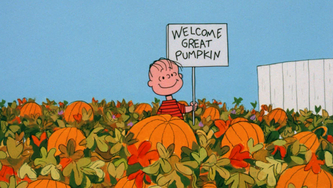 Last month I featured apples. Being an equal opportunity blogger, I will now give props to pumpkins. Pumpkins have over 45 varieties which pales in comparison to the 7500 varieties of apples. Really, who cares? They are the most popular fruit throughout October and November. Yes, technically, they are a fruit. They belong to the cucumber and melon family. Mercifully, we hear way fewer pumpkin idioms, than apple idioms. A sample includes – turn into a pumpkin, pumpkin head, punkin (meaning something great), out of his gourd. However, there seem to be endless sayings that have the word pumpkin. For example, “a rolling pumpkin gathers no moss” or “a pumpkin by any other name is still a pumpkin.” I know. Pretty lame. So let’s get to the fun facts: The word pumpkin was first used in the 17th century. Pumpkins are grown on every continent except Antarctica. The original Jack O’ Lanterns were carved from turnips and potatoes by the Irish. In England they used carved beets with lights inside to ward off evil spirits. When the Irish came to North America they found pumpkins easier to carve. Pumpkins were once thought to be a remedy to remove freckles. The original pumpkin pie can be traced back to the colonists. It was not the pie we know today. They cut the tops off and filled the pumpkin with milk, honey, spices and baked it over ashes. Each pumpkin has around 500 seeds. Every part of the pumpkin is edible – skin, leaves, flower, pulp, seeds, even the stem. Pumpkins are 80-90% water. Yet they are good sources of potassium and Vitamin A. The seeds are rich in nutrients such as anti-oxidants, protein, magnesium, iron, zinc to cite a few. Not to be outdone by apples, there is also – wait for it - A fear of pumpkins. It is a real thing and is known as cucorbitophobia. How about them pumpkins! Sheesh, I almost said apples. And, as we might expect, the pumpkin is always oranger on the other side of the patch. Comments are welcomed. 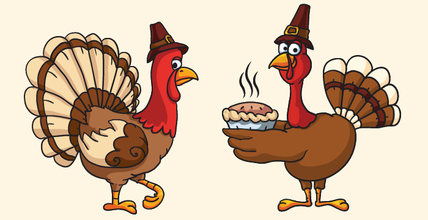 Happy Thanksgiving to all Canadians. I feel very fortunate to have been able to celebrate U.S. Thanksgiving for the first part of my life, and Canadian Thanksgiving ever since. Historically they differ. Otherwise the similarities are quite evident. The menus with all the trimmings are essentially the same. We also share the more important big picture which includes family, good will and gratitude for all of our blessings. I believe it really matters to have this designated day for giving thanks. That said, why not have every day as the day for giving thanks? Last year I interviewed a 12 Yr. old boy and a 10 yr. old girl for their thoughts about Thanksgiving. Their sincere, heartfelt answers were very moving. I decided to speak with them this year to see if their perspectives had changed. Following is a reprint of the former interview. I’ve inserted this year’s comments whenever there was a difference. It’s great to see the values of these kids and that their values are a part of their character going forward in life. Me: Thanksgiving is often associated with harvest. What does harvest mean to you? D: I think of corn, pumpkins and all the crops that are ready. K: New crops growing. New harvest like a fresh start. Me: What comes to mind when you think of Thanksgiving? D: Family, friends get together. Eat and talk together. A break from school. Some friends don’t come from here. They travel to their families and find joy returning to their roots. K: The decorations and everyone sitting together and talking about our lives. Me: What would you like to share that you are thankful for? D: I’m thankful for being born into this family, for having enough food, water and a good education. (Family, friends, food and the nice life I have here) K: Being thankful for everything we have, friends, family; how lucky we are to be living in Canada in a safe country. (Added the family dog to list) Me: What’s the fun part of Thanksgiving? D: Having family and friends over and sharing food. (Same) K: Being with family and friends we haven’t seen in awhile. (Same with addition of decorating her room for Thanksgiving) Me: We don’t want to forget about the meal. What is your favorite Thanksgiving food? D: Stuffing, pumpkin pie. Our dog likes pumpkin, too. (All of those plus mashed potatoes) K: Stuffing, turkey and apple crumble. (Added mashed potatoes and getting pumpkins) Me: (I’m with them on the stuffing.) What would be your Thanksgiving wish for the world? D: I wish for peace, enough food, water, proper clothing for everyone and for everyone to be loved. (Added for all people to be happy and safe) K: I wish for all arguments and wars to be over, for world peace, for the homeless to have homes to live in, food and clean water. (Same although emphasized homes and food for the homeless) Comments are welcomed. 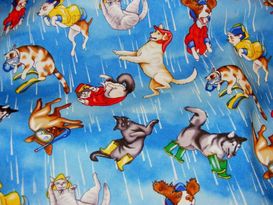 Metaphors, idioms, superstitions are such an integral part of our everyday language we probably don’t even notice using them. Well, a couple of years ago I began noticing their use talking with friends, listening to others wherever the spoken language occurs. In addition to just being aware, I also began wondering about their origin. I thought it would be fun to share what I discovered as I researched some of them. A metaphor can be defined simply as using one thing to describe another – time flies, he kicked the bucket, that meeting was my worst nightmare, etc. We use 6 metaphors every minute. The brain is a big fan of metaphors. Metaphors help us to understand abstracts, symbols and concepts. They certainly are integral to language and communicating with others. An idiom is a phrase or an expression that has a figurative meaning - it was raining cats and dogs, a piece of cake, a taste of your own medicine. Superstition we all get. Here is the Merriam-Webster Dictionary definition anyway – a belief or practice resulting from ignorance, fear of the unknown, trust in magic, chance or false conception of causation. Some familiar superstitions – walking under a ladder is bad luck, Friday the 13th, breaking a mirror is 7 years bad luck, toss spilled salt over left shoulder for good luck, finding a horseshoe is good luck. Origins: Under the Weather – In the old days, when a sailor was feeling seasick, "he was sent down below to help his recovery, under the deck and away from the weather. Thus, under the weather. Letting the cat out of the bag - Up to and including the 1700s, a common street fraud included replacing valuable pigs with less valuable cats and selling them in bags. When a cat was let out of a bag, the jig was up. Butter someone up - A customary religious act in ancient India included throwing butter balls at the statues of gods to seek good fortune and their favor. Flying off the handle - This one is said to come from poorly made axes of the 1800s that would literally detach from the handle. Yikes! Don’t throw the baby out with the bath water - This idiom allegedly comes from a time when the household bathed in the same water; first, the lord would bathe, then the men, the lady, the women, the children, and the babies last. The bath water is said to have been so dirty that there was a risk of throwing the baby out with the water once everyone was done bathing! Mind your P’s and Q’s - There are many origin stories for this one, but perhaps the one that is most fun is that bartenders would keep track of the pints and quarts consumed by their patrons with the letters “P” and “Q.” Mad as a hatter - This did not come from Lewis Caroll’s Alice in Wonderland. Its origins date from the 17th and 18th centuries — well before Lewis Caroll’s book was published. In 17th century France, poisoning occurred among hat makers who used mercury for the hat felt. The “Mad Hatter Disease” was marked by shyness, irritability, and tremors that would make the person appear “mad.” And some superstitions: Walking under a ladder is bad luck - This superstition really does originate 5,000 years ago in ancient Egypt. A ladder leaning against a wall forms a triangle, and Egyptians regarded this shape as sacred (as exhibited, for example, by their pyramids). To them, triangles represented the trinity of the gods, and to pass through a triangle was to desecrate them. Knocking on wood – One origin suggests that some of these tree worshippers laid their hands on a tree when asking for favor from the spirits/gods that lived inside it, or did it after a run of good luck as a show of gratitude to the supernatural powers. Over the centuries, the religious rite may have morphed into the superstitious knock that acknowledges luck and keeps it going. Spilled salt - Spilling salt has been considered unlucky for thousands of years. Around 3,500 B.C., the ancient Sumerians first took to nullifying the bad luck of spilled salt by throwing a pinch of it over their left shoulders. This ritual spread to the Egyptians, the Assyrians and later, the Greeks. Hang a horseshoe on your door open-end-up for good luck - The horseshoe is considered to be a good luck charm in a wide range of cultures. Belief in its magical powers traces back to the Greeks, who thought the element iron had the ability to ward off evil. Not only were horseshoes wrought of iron, they also took the shape of the crescent moon in fourth century Greece for good fortune. Now, throw a pinch of salt over your left shoulder and have a good day. Remember, however, when you go out be sure not to step on any cracks. Comments are welcomed. |
Archives
April 2024
Categories
All
|

 RSS Feed
RSS Feed
